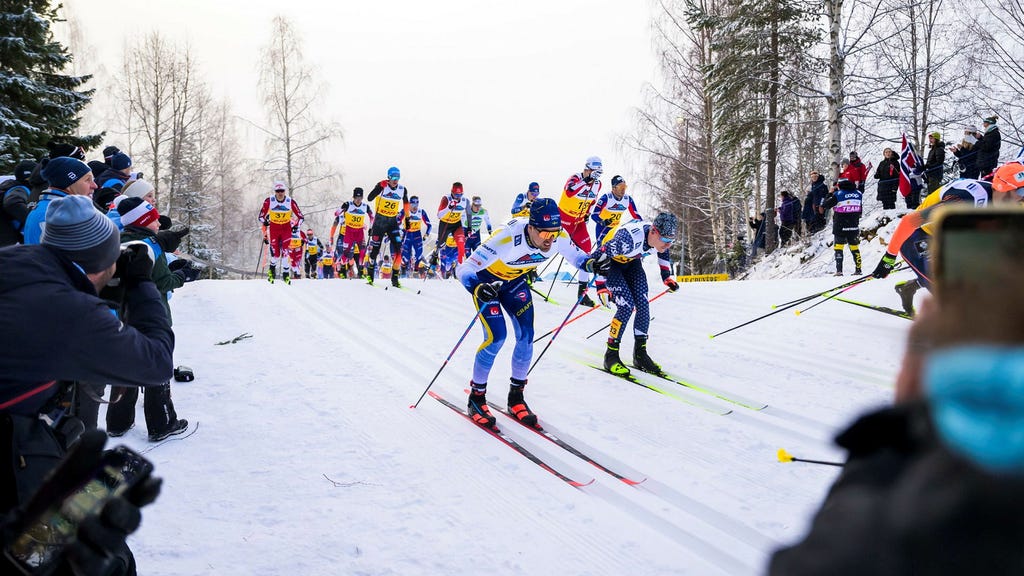Calle Halfvarsson, the 35-year-old Swedish cross-country skier, withdrew from the skiathlon event at the World Cup stage in Lillehammer, Norway, citing persistent back problems. His performance leading up to the withdrawal was significantly hampered, trailing the leader by 19.4 seconds at the 5-kilometer mark and ultimately failing to reach the subsequent checkpoint at 6.3 kilometers. Halfvarsson expressed his frustration in a post-race interview, describing a lack of energy during warm-up and a feeling of his body not functioning properly, particularly on one side. He attributed these issues to his recurring back pain, which he reported was radiating down his legs, impacting his ability to perform at his usual level. This decision follows a previous interruption to his season due to the same back issue, forcing him to withdraw from the Swedish season opener in Bruksvallarna in late November.
Halfvarsson’s struggles with his back paint a concerning picture of his physical condition. The radiating pain down his legs suggests a potential nerve impingement or other serious issue that significantly affects his mobility and performance. His comment about feeling like he’s skiing with “half a body” underscores the severity of the problem and the extent to which it limits his ability to generate power and maintain balance. The fact that he was unable to complete the race, even after returning to competition following the initial setback in Bruksvallarna, suggests that the underlying problem has not been fully resolved and may require further medical investigation and treatment. The recurring nature of this issue raises questions about his ability to consistently compete at the highest level and potentially casts a shadow over his long-term prospects in the sport.
Despite his return to the World Cup circuit for the opening races in Ruka, Finland, where he finished a respectable 12th in the 10-kilometer classic event, his subsequent 29th place in the 20-kilometer freestyle race hinted at lingering issues. His 33rd place finish in the 10-kilometer freestyle race in Lillehammer further solidified the impression that he was not performing at his peak. The eventual withdrawal from the skiathlon confirms the persistent nature of his physical limitations and highlights the need for a comprehensive assessment and treatment strategy to address the root cause of the problem.
The toll of these recurring back problems on Halfvarsson’s career is becoming increasingly evident. His inability to consistently train and compete at his full potential places him at a significant disadvantage against his rivals. The repeated interruptions to his season disrupt his rhythm and make it difficult to build momentum and maintain peak fitness. Moreover, the psychological impact of dealing with persistent pain and uncertainty about his physical condition can further erode his confidence and ability to perform under pressure. The ongoing challenge for Halfvarsson will be to find a sustainable solution that allows him to manage his back pain effectively and return to competitive skiing at the level he aspires to.
In contrast to Halfvarsson’s struggles, fellow Swede William Poromaa, 23, delivered a more promising performance in the skiathlon. Poromaa remained competitive within the leading group throughout the race, demonstrating his potential and endurance. Although he eventually faded towards the end, finishing in eleventh place, 23.8 seconds behind the winner, his performance offers a positive sign for the Swedish team. Poromaa’s ability to maintain contact with the leading pack for a significant portion of the race suggests he possesses the speed and stamina to compete at the highest level. His eventual drop-off in pace may be attributed to a lack of experience in managing his energy reserves over the demanding distance or simply the superior strength and finishing speed of his more seasoned competitors.
The Norwegian team dominated the skiathlon, securing a clean sweep of the podium. Harald Østberg Amundsen claimed the victory, followed by his compatriots Jan Thomas Jenssen and Martin Løwstrøm Nyenget. This dominant display underscored the strength and depth of the Norwegian cross-country skiing program. Their success reflects a combination of factors, including a strong talent pool, excellent coaching, and a well-developed system for developing young skiers. The Norwegian skiers’ ability to control the race and secure all three podium positions highlights their tactical acumen and superior physical conditioning. Their performance serves as a benchmark for other nations, including Sweden, as they strive to close the gap and challenge for top honors in international competition.














